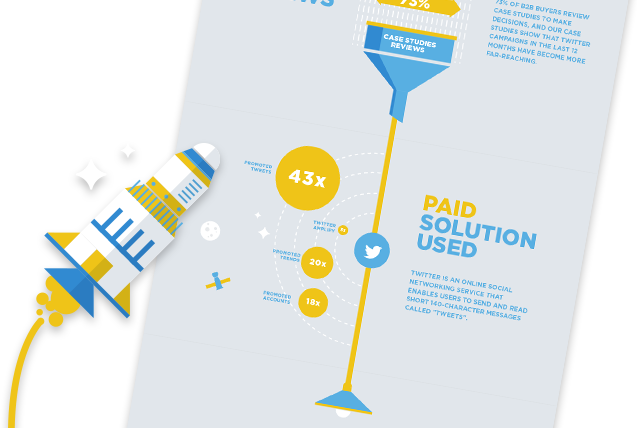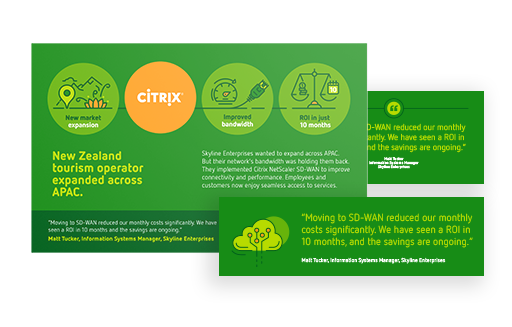
Some regard video marketing as just a passing fad. Others think of it as the icing on the branding cake - a ‘nice to have’. In this post, we separate the facts from the fiction. Here’s why video marketing is set to be one of the most important ways of connecting with customers in 2018 and beyond.
Myth 1: Video is just a marketing fad
According to The Cisco® Annual Visual Networking Index, by 2021, 78% of mobile traffic will be video. That’s a nine-fold increase in the use of video between 2016 and 2021, and a cumulative annual growth rate (CAGR) of 54%.
Much of that video will be marketing content.
What accounts for video’s meteoric rise? The reasons are many, but a major factor is that the way we consume content – at all levels – is changing.
One reason for this is time – or the lack of it. In a busier world, we simply don’t have the time to peruse mountains of content. Then there’s a second factor – we’re often busy commuting. On a jam-packed train or in a taxi, it’s far easier to put in headphones and watch a two minute video than it is to read an article. Video messaging is bold and clear. The images are impactful. The music immersive. Video informs and engages our attention in a busy world.
As the Cisco report notes:
One consequence of the growth of video in both fixed and mobile contexts is the resulting acceleration of busy-hour traffic in relation to average traffic growth. Video usage tends to occur during evening hours and has a “prime time,” unlike general web usage that occurs throughout the day. As a result, more video usage means more traffic during the peak hours of the day.
The report adds further that: ‘video services are fast becoming an integral part of consumers and business users’ lives.’
Myth 2: Video is expensive and time consuming to produce
A common misperception is that it takes ages and costs a fortune to produce video.
However, with the use of clear storyboarding and effective design and copywriting principles, marketing video production can be fast and inexpensive. Efficiencies stem from the process itself – first messaging and storyboarding, then copywriting, visuals and sound.
For companies with a clear message to share, video production can be not only incredibly rapid but – because of the efficient layering approach – highly cost effective, too. Read more about the marketing video production process here.
Myth 3: Video is only suitable in a handful of situations
One of the most common misperceptions about video marketing relates to its core why and how.
It’s not uncommon, for example, for people to assume that video is only suitable for certain types of marketing message – narrating a brand’s history, for example, or a showcase of a new product that’s highly reliant on visuals.
The reality, however, is far different. Great applications range from CEOs to sharing thought-leading ideas, to tutorials, how-tos, user guides, internal training videos, external announcements and much more.
Myth 4: Video is great, but it won’t boost the bottom line
Many marketing execs praise video as a unique, engaging way of reaching customers and decision makers. At the same time, they regard video as optional, a ‘nice to have’ – the sugared capstone on an otherwise ironclad marketing or brand-building programme - and unlikely to promote sales in itself.
Yet, many forget one key factor: video’s consumability on-the-go – its ability to immerse a viewer in a new world immediately, regardless of context. Be it in his or her office, on a train, in a subway car, restaurant queue or anywhere else. In a time-strapped world, we’re most receptive to bite-sized messages delivered with impact. Great marketing videos increase revenue.
Myth 5: But we all skip videos, if we can
The truth about video is that you have just a few critical seconds to impress or disappoint your viewer – just a few critical moments when you start telling your story, to hook or lose a viewer. To pique their interest – or become just another video to skip.
It’s not mere chance that determines what gets skipped. It’s all down to impact and authenticity, an awareness of how viewers want to consume content, as well as what type they want to consume. A customer actively searching for a video tutorial has far more time and patience than one browsing enroute to work who stumbles on your content.
The trick is understanding this context, understanding your viewers, and structuring appropriately. In general, shorter is better. Content under two minutes keeps viewers’ attention. Couple that with bold, unique, engaging messaging and your content shines.






